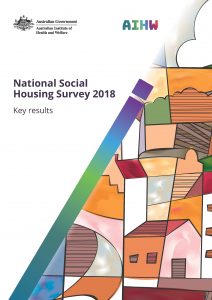Australian Institute of Health & Wellbeing release to national Social Housing Results from 2018
Having a roof over one’s head is generally regarded as essential to a person’s health and wellbeing. However, not all Australians have the same access to safe and affordable housing.
Social housing programs provide rental housing at below-market rates to low-to-moderate income Australians who may otherwise struggle to find affordable housing.
In recent years, social housing has been targeted less to low-income working families and more to those in greatest need, including people who are homeless, live with disability, or are experiencing family or domestic violence.
This report presents key results from the 2018 National Social Housing Survey. It looks at tenants’ satisfaction with their social housing and how this has changed over time, and the differences between states and territories.
For the first time, it examines how different characteristics relate to tenant satisfaction levels, after accounting for other factors. The factors examined include housing program, household composition and demographics, and the location and condition of tenants’ homes.
The main social housing programs in Australia are:
- public housing (PH)
- state-owned and managed Indigenous housing (SOMIH)
- community housing (CH).
“There are about 785,000 Australians living in 419,000 dwellings in the 3 main social housing programs—and 195,000 Australian households are waiting for social housing”
For every 20 Australians living in social housing:
- 11 are female 9 are male Households For every 20 social housing households:
- 12 are single adults living on their own
- nearly 3 are sole parents
- 5 are couples, extended families or groups (with and without children)
- 1 in 10 households are Indigenous
- 4 in 10 households have one or more members with disability
- 5 are aged under 18
- 2 are 18–24
Source: Australian Institute of Health & Wellbeing








